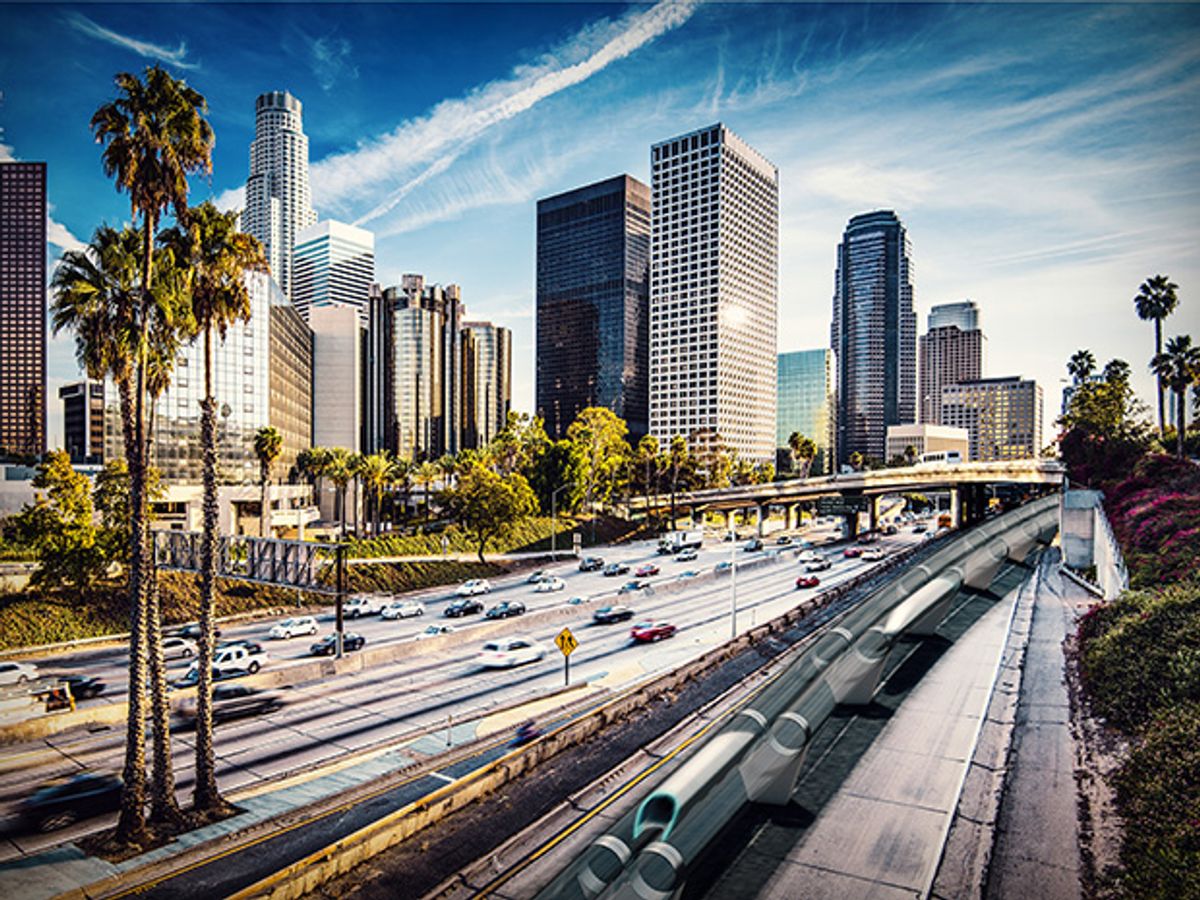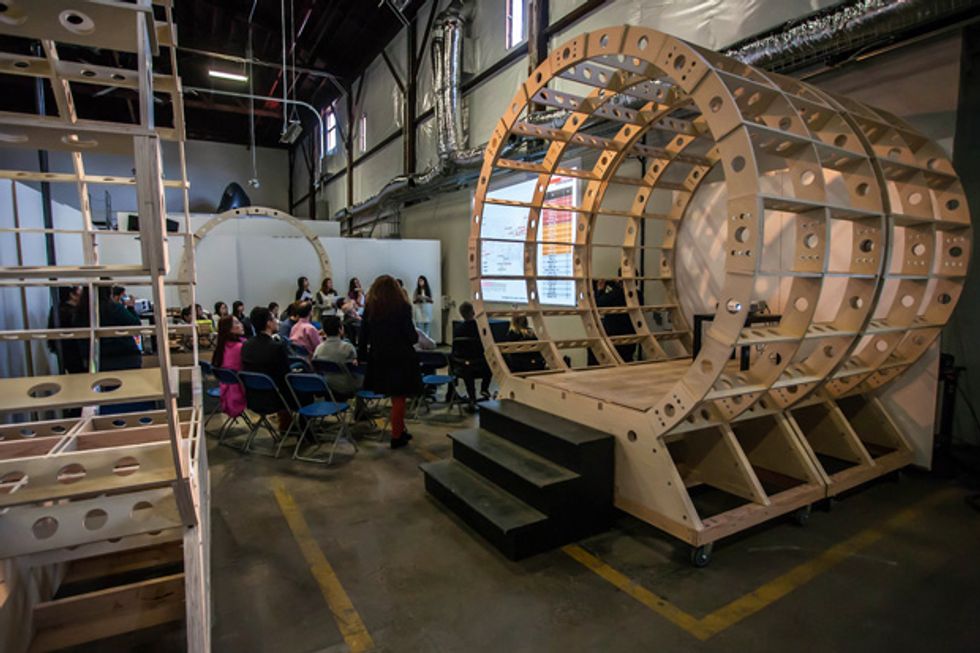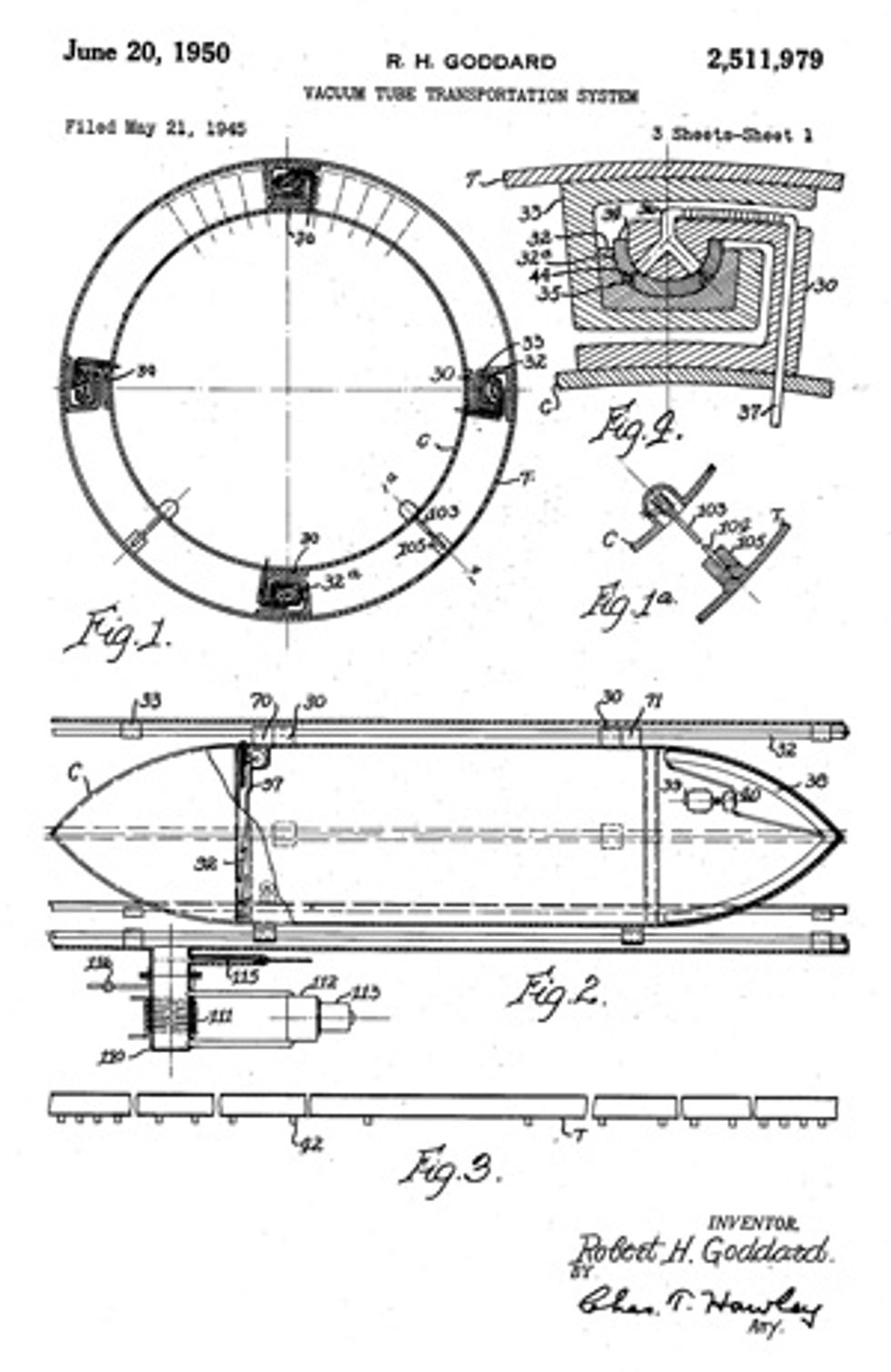Elon Musk’s Hyperloop Proposal Gains Momentum
Before building a vacuum train tube from L.A. to San Francisco, proponents must succeed with an 8-kilometer test track

The Straight Road: Only when dawdling in the city can Hyperloop capsules handle more than a gentle curve.
In 2013, Elon Musk had an idea. He would propel passengers in a pod through an evacuated tube at nearly the speed of sound, hurtling them from Los Angeles to San Francisco in 30 minutes. It’s a lot quicker than the 2 hours and 40 minutes of the rival technology, a proposed high-speed train.
He called this scheme the Hyperloop and said it would cost US $6 billion to build versus $60 billion for the train. And because the Hyperloop’s friction-free movement would save energy, operating costs would be lower, too.
Then Musk pulled out, citing prior commitments to his existing startups, Tesla Motors and SpaceX. But to encourage others to implement his proposal, he had SpaceX organize an open competition, whose first round—a design contest—was scheduled to take place this month, as this issue was going to press. It attracted more than 1,200 registered teams, mostly of engineering students. But the contest was no mere science fair. Now there are two startups—Hyperloop Transportation Technologies (HTT), founded in 2013, and Hyperloop Technologies, in 2015.
Yes, the idea is crazy. But not as crazy as you think, and not at all for the reasons you think it is.
Matter of Fact
In the 1970s, Swissmetro proposed a system of evacuated tubes that would conduct trains at 500 kilometers per hour. In 2009, the project folded for lack of funding.
You’ve got to hand it to Elon. Actual folding money has been raised, and in 2016 actual ground is to be broken, on HTT’s 5-mile (8-kilometer) test track in California. All this without any key breakthrough to brighten the outlook of what is a very old idea. In 1906, future rocketeer Robert H. Goddard wrote a sci-fi story on the idea for a college class (incorporating ideas that he later patented; see illustration, “A Rocket Man’s Dreams”). The only new thing is the enthusiasm of Musk, a man who has already made big promises and delivered on them.
Musk managed to position the scheme as a modest proposal—this is part of his genius—by sketching out specifications far less thrilling than those of Goddard and his successors. Robert Salter, for example, was a Rand Corp. analyst who imagined firing pods from New York to Los Angeles in 21 minutes (as this magazine described in 1984).
Salter’s decidedly immodest proposal would put you in a capsule in New York or Japan, levitate you above a magnetic track to sidestep rolling friction, accelerate you along a linear induction motor—essentially an electric motor rolled out flat—then let you coast losslessly through a nearly perfect vacuum at Mach Plenty. The top speed would be cleverly limited so as to avoid a sense of weightlessness caused by following the curvature of the Earth at high speed. Finally, the capsule would decelerate along another linear motor functioning as a generator, to scavenge energy for reuse. Hello, other side of the world!
By contrast, Musk’s capsule would travel at subsonic speeds in a much softer vacuum, a concession that allows his pod to be borne on a cushion of air (and still be propelled electromagnetically). It’s a strategy many student teams in the design competition appear to be following, although HTT still prefers magnets. The air cushion would be fed by the output of a battery-powered compressor at the front of the pod, another reason why the system could work only at subsonic speed.

One thing student teams and other enthusiasts are supposed to do is find and correct errors in Musk’s sketchy proposal. It’s crowdsourcing, and it’s working. For instance, after a temporary U.S. government shutdown forced some NASA researchers to find something else to do with their time, they tackled the Hyperloop’s turbine idea and found it needed tweaking.
“Compressors won’t go beyond a certain speed” unless you expand the cross-sectional area of the turbine’s intake in comparison with its payload, says Jeffrey Chin, an aerospace engineer at NASA Glenn Research Center, in Cleveland. “Since you can’t shrink people, you must expand the tube.” Indeed, the most recent specs for the Hyperloop require a tube more than twice as wide as the pod.
Even at a mere 1,200-plus kilometers per hour (760 miles per hour) the Hyperloop would still be far faster than existing airliners—and faster yet in effective speed because, like trains, it would connect cities at their centers. But also like trains, the Hyperloop couldn’t go just anywhere, so its technological sweet spot would be middle-range trips—such as the 560-km stretch from L.A. to San Francisco.
Musk, who holds a degree in physics from the University of Pennsylvania, got the science essentially right. You can indeed maintain a nearly friction-free surface, either with air cushions—as the hovercraft people will testify—or with magnets, as the maglev people will affirm. Civil engineers can lay a very straight track. Linear accelerators work.
Matter of Fact
In 1985, scientists at MIT used electromagnetic propulsion to fire a Ping-Pong ball through an evacuated tube.
And you need pull only a partial vacuum. HTT is talking of a tube pressure below 100 pascals, which is a thousandth of an atmosphere. It’s not onerous at all, insists Carl Brockmeyer, head of business development at Oerlikon Leybold Vacuum, an outfit based in Cologne, Germany, that is collaborating with HTT.
“I’m tempted to say it’s easy, but better to just say it’s very achievable—this will not be the big technology difficulty,” says Brockmeyer. “We are most likely suggesting a displacement pump,” he adds. “I’m not entitled to tell you how much equipment we’re going to use, but it depends not only on what’s necessary to keep vacuum—we also need a redundant system,” he goes on. “Maybe we’ll install an extra pump in case we need to exchange pumps or to not have to run them all at full speed.”
To answer these and other questions, HTT plans to begin constructing its 5-mile test track in 2016 in Quay Valley, Calif., halfway between L.A. and San Francisco. By the way, that’s also the site of a proposed solar-powered city—which is convenient, given that Musk is now also making battery storage for solar homes and because his specs call for powering the Hyperloop with tube-mounted solar panels.
Other questions to be answered at the test facility include these: How would you—pardon the expression—evacuate passengers in an emergency? What happens to followers if a pod up ahead has to stop short? How do you avoid pileups during the deceleration phase? Restart the system once you’ve repressurized all or part of it? And how well will civilians bear the stress, with high-def screens substituting for portholes to ward off claustrophobia and with g-forces reminiscent of roller coasters?
About that last one, at least, some observers are squeamish. “It’s not transportation; it’s a barf ride,” comments Alon Levy, a Stockholm-based mathematician who blogs on transportation.
HTT is facing this and other aerodynamic problems, says Craig Hodgetts, the chief architect of the project and a professor at the University of California, Los Angeles. Its evolving design is now rather different from the original Musk vision, which he says is one reason why HTT won’t participate in the SpaceX competition.
“The artist’s sketches that accompanied Musk’s proposal consider the capsule with a kind of sloping nose akin to that on high-speed-rail trains,” Hodgetts says. “That’s an appropriate configuration if you’re not in a tube, but in a tube the ideal shape is symmetrical all the way around. So we made quite a difference in terms of locating the capsule in the tube.”
Because HTT will suspend its pod magnetically rather than pneumatically, it will need a smaller frontal compressor turbine than originally envisioned, he says. That means the pod can get along with lighter batteries and cooling systems. That weight reduction should minimize buffeting (and barfing). But work is still going on to figure out how passengers will cope with acceleration.
loyaltyshopping_cartlocal_librarydelete
“My sense is there will be fine-tuning at the Quay Valley installation,” Hodgetts concludes. “Some of our research indicates that at full speed it’ll pull 1.5 g’s in a 15-mile turning radius—quite a lot. That’s a big determinant in laying out a route. And it doesn’t look like it’ll be practical to slow capsules down to any degree in order to maneuver, so there has to be a very sophisticated analysis of speed, route, and sensation.”
Let’s say the ergonomic issues can be solved—and that, with enough backup systems, the safety challenges can, too. Now the really big problem is, of course, money.
Hodgetts asserts that building the tube itself is actually not a hard problem: “It’s several tiers down from building a skyscraper 1,000 feet high, where you have unpredictable wind forces, possible seismic forces, shrinking concrete.”
Other experts are a tad less sanguine. “This is a huge project that no one has ever done, and he [Hodgetts] is promising this thing at really a ridiculous cost, not knowing if it will work,” says Leon
Vanstone, a postdoc who studies high-speed aerodynamics at the University of Texas at Austin.
“If you fire it down at high speed, very small deviations in the tube can cause buffeting,” Vanstone adds. “Even if you can get it quite straight in the first place, the ground moves, especially in California. It could be loud; it could be rattly.”
These problems will probably not dominate the open competition this month. It involves design, not a trial run, so the registered teams have so far been able to make do with university funding, freebie modeling software, and the odd gift from corporations. Students who spoke to IEEE Spectrum said their research funding would likely be under $100,000—in the short term. When actual trials must be run, more funding will be needed to compete.
Matter of Fact
SpaceX is building a test track in California with an evacuated tube 1.8 meters high and 1.6 kilometers long.
“We’ll build and design a test model to compete in this winter’s competition,” says David Coven, a mechanical engineering student who’s leading the University of Washington team. “It won’t be full size—more like 3 by 4 by 14 feet, like a Formula One. We’ll also be building a test tube 1 mile long.”
Bigger fish may enter the competition in its later phases. Chin, of NASA, hinted that he and his colleagues might want to give it a try. He is already thinking of how the problem changes as you move from the design to the testing phase. “The devil is in the details, when it comes to moving to a bigger system,” he says.
Legal and political obstacles may eclipse even the economic ones. New York City’s subway system is supposed to open the first stretch of its Second Avenue Line at the end of 2016. The relevant numbers: 3.2 km (2 miles), $4.5 billion, and nine years. That’s how long it will have taken to build, if you count from the day workers broke ground (and 97 years if you start with the day the line was first proposed).
True, Manhattan’s depths are riddled with pipes, cables, maybe Morlocks. But the main impediments here were not metal and dirt but rather even grubbier stuff: politics and lawyers. And the same could be true for the Hyperloop. Musk has argued that right of way could be had for a song by building alongside existing power lines. Good luck with that.
But when the day comes that public officials are asked to approve a Hyperloop and pony up the funds, the merry pranksters of the Hyperloop will face serious opponents armed with spreadsheets of their own. Unless they go to a country where the political leadership can be relied on to make things happen.
Maybe that’s why Dirk Ahlborn, the CEO and founder of HTT, spent the tail end of the summer in Asia. When Spectrum caught up with him, in late September, he wouldn’t reveal exactly where he’d been, but he did say where he was going.
“I can say for sure the first full-length track will be in Asia, the Middle East, India, or Africa,” Ahlborn said. “They have bigger issues and no existing infrastructure, so a real need to build. A system like ours is way more interesting for them than going with high-speed rail.”
This article originally appeared in print as “Hyperloop: No Pressure.”
